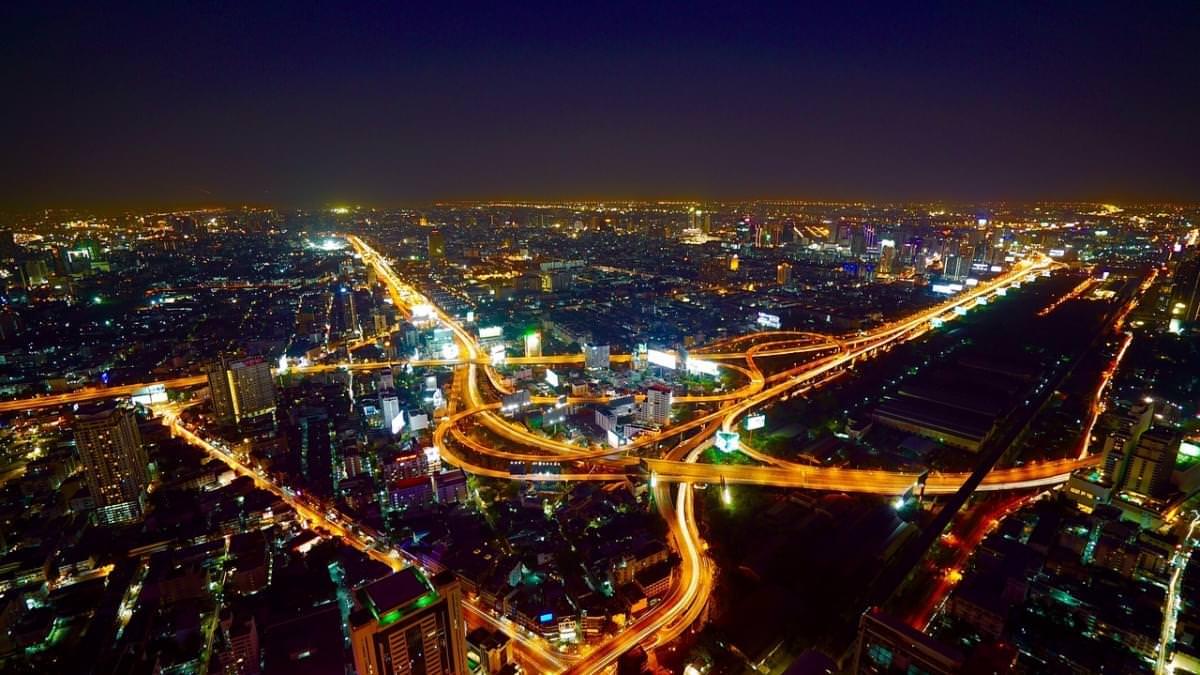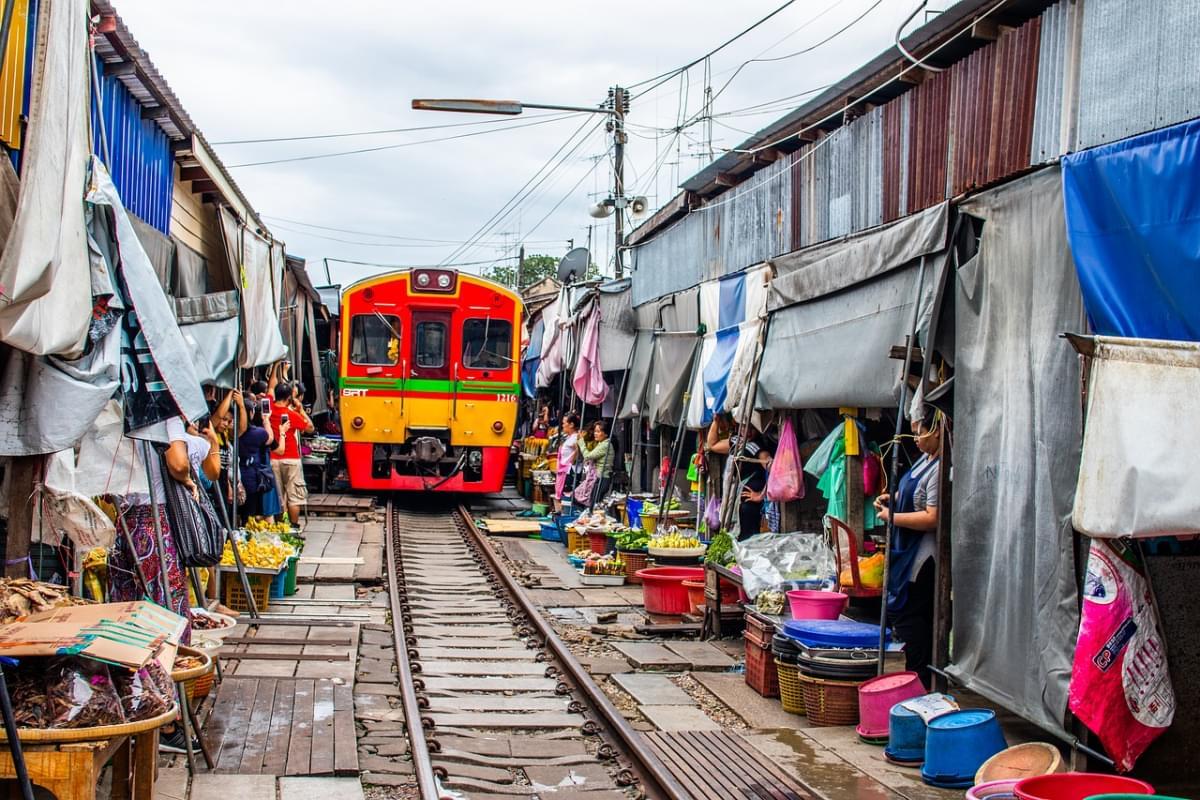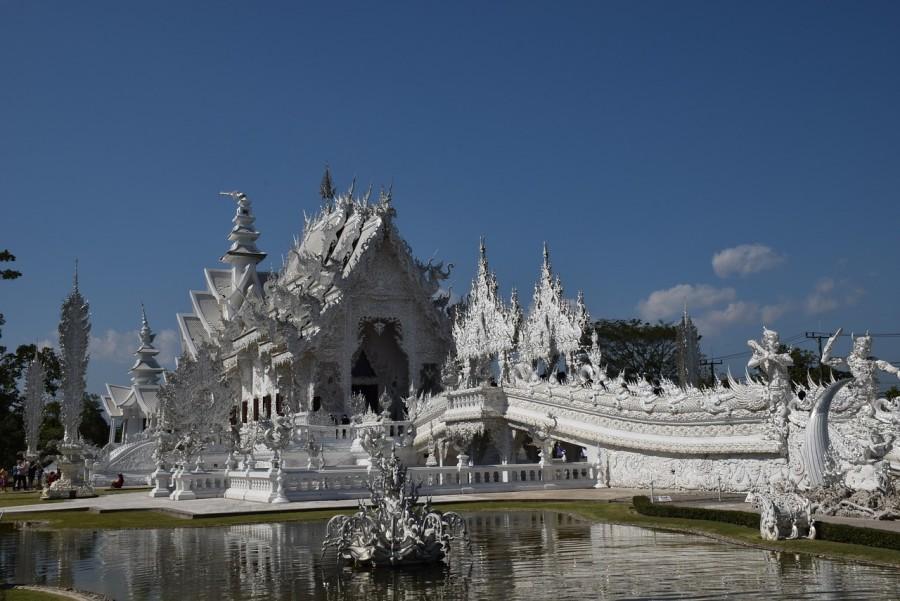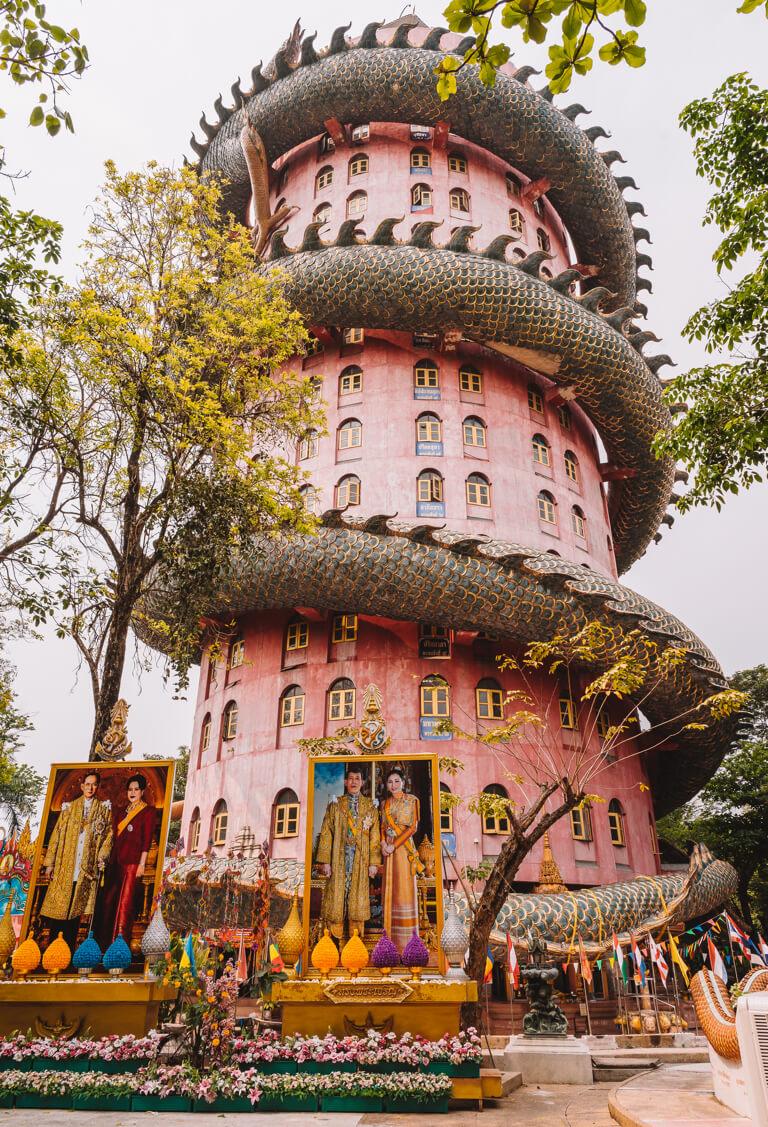Getting around Bangkok is easy and cheap! So don't hesitate to take a tuk-tuk, the modern and safe metro, a taxi, the sky train or even the boat on the Chao Praya river, which can be very practical for visiting Bangkok's temples. We invite you to find out more in this article, which is part of our trip to Thailand.
How do you get around Bangkok? Our travel advice.
If you decide to visit Bangkok on foot, you'll have to take a lot of detours, as the avenues are huge and sometimes you have to cross them over long pedestrian bridges. At the traffic lights, a counter indicates the waiting time at pedestrian crossings. At every major intersection, this can take minutes. It's a real-life experience! We therefore advise you to take the soi, Bangkok's backstreets. A rather fun route on foot is to get lost in the soi between Lumpini Park (Silom) and the Ghost Tower, for example.
Here are the different means of transport to get around Bangkok.
1. No. 1 means of transport in Bangkok: the tuk-tuk
What is a tuk-tuk? It's a moped with accessories including a bench seat at the back and a hardtop. With 2 or 3 people, it's easy to let yourself be guided around the city for a modest sum, depending of course on the length of the journey. The fare is always negotiated before you get in.
You can book a tuk-tuk for the day or stop one on the fly in one of the city's many streets. The undeniable advantage of this type of transport is that it is fast, as it weaves in and out of the uninterrupted queues of cars. Don't forget that traffic is very heavy all day in Bangkok. You can also find tuk-tuks at night. We highly recommend this type of transport for getting around Bangkok.
The tuk-tuk is such an integral part of Thai culture that you can now treat yourself to a night-time food tour of Bangkok. It was an unforgettable experience that we tried out in January 2019, when we were able to sample a whole host of Thai specialities, visit a flower market and see Wat Arun by night. All in all, an exceptional evening.
2. Transport: Bangkok metro
There are several types of metro in Bangkok.
Bangkok's underground metro is called the MRT(Mass Rapid Transit). It first came into service in 2004. There are 18 stations and around 27km of track. 240,000 passengers use the "blue line". Buying a ticket couldn't be easier: go to the station's automatic ticket office. Open from 6am to midnight every day of the week.
The aerial metro or Skytrain is called the BTS(Bangkok Mass Transit System ). There are 2 Skytrain lines in Bangkok: the Sukhumvit line and the Silom line. They have been in service since 1999. The lines run along the capital's main roads, covering a total distance of 26 km and 25 stations, one of which connects with the MRT underground metro. Automatic ticket machines are available at all stations to buy tickets or day passes.
Worth noting: Bangkok's Suvarnabhumi International Airport is linked to the city centre by an aerial metro, which is very practical and, above all, cheaper than a taxi. Don't forget it!
Map of metro systems in Bangkok
New stations open every year. The routes are actually lengthened. This map dates from 2012. It's more than enough for tourists and travellers.
3. Getting around Bangkok by taxi
Taxis are very practical and, above all, air-conditioned and less noisy than tuk-tuk, but they are nevertheless slower than tuk-tuk in the city and at peak times. It is a good idea to use this mode of transport for long and medium-distance journeys in Bangkok.
Taxis are very easy to recognise because they are brightly coloured. Prices are more than reasonable, especially if you compare them with Parisian taxis, for example. Available 24 hours a day. Don't forget to check that the meter is running when you leave, and prefer "TAXI METER" taxis.
The problem for short distances is that many taxi drivers in Bangkok refuse to turn on their meters. Don't get into the car if you're not sure that the meter is going to be turned on and that the driver has understood the requested destination. The search for an honest taxi can sometimes be a real hassle, especially on the outskirts of large shopping centres like MBK, but if we can all avoid encouraging this practice, we'll all come out ahead.
On the other hand, there's never any problem with taxis waiting for you at the airport. You get a ticket at a counter and everything is settled before departure. You need to have cash on you to pay the fare, as well as the luggage surcharge and any additional tolls, which will help you avoid the long hours of traffic jams on the way to Bangkok.
4. Everyday boat travel in Bangkok
Taking a boat in Bangkok is a way of life.
To get to the temples, there's nothing more exciting than boarding one of the shuttle buses on the Chao Praya River. This is a very practical way of discovering Bangkok from a new angle, and for a small fee payable directly on the boat, not on the quay. When you arrive at the quay, make sure you don't get mixed up with the other companies on site, whose employees inevitably have a tendency to fleece foreigners. They are not thieves, but they do offer cruises. And that's not what we're looking for here.
To conclude our advice on getting around Bangkok,
Bangkok is a must-see on any trip to Asia. In 2013, Bangkok became the most visited destination in the world, ahead of London and Paris.
Many people start their trip with a visit to Bangkok, while others stop off in the middle or at the end of their holiday. This megalopolis is rich in culture and people. Having visited the Thai capital several times, we've published a whole series of articles on Bangkok and Thailand: city guide, itinerary, must-sees with travel tips, photos and videos.
TOP 10 must-sees in Bangkok
City Guide Bangkok
Thailand itinerary step by step
Related articles

What to know for a Trip to Thailand

Koh Samui, Thailand: when to go and what to see

Excursions from Bangkok: the best day trips around Bangkok

Thailand: Casa De La Flora Resort

Chiang Rai and the Golden Triangle, Thailand: what to see, when to go and excursions to do

10 Things to eat in Bangkok and where
Travelogue Thailand - Round Trip Highlights & Tips

Dragon Temple, River Market & Co: 5 exciting Bangkok insider tips near the capital of Thailand








